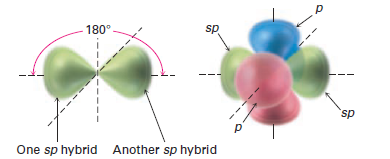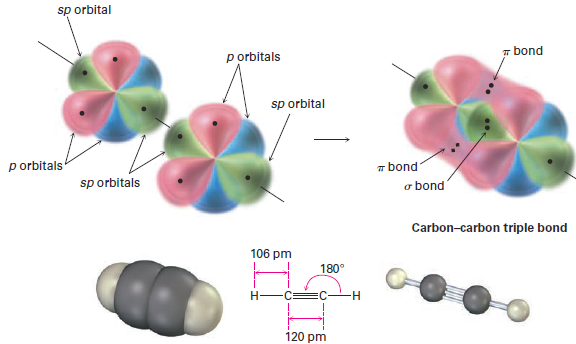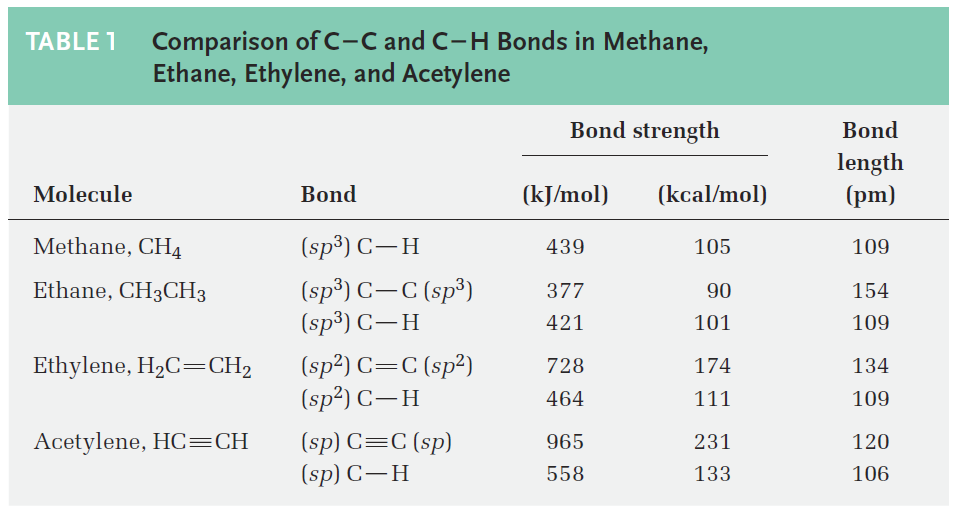
sp Hybrid Orbitals and the Structure of Acetylene
 المؤلف:
John McMurry
المؤلف:
John McMurry
 المصدر:
Organic Chemistry
المصدر:
Organic Chemistry
 الجزء والصفحة:
9Th. p17
الجزء والصفحة:
9Th. p17
 7-2-2016
7-2-2016
 3750
3750
sp Hybrid Orbitals and the Structure of Acetylene
In addition to forming single and double bonds by sharing two and four electrons, respectively, carbon also can form a triple bond by sharing six electrons. To account for the triple bond in a molecule such as acetylene, H-C≡C-H, we need a third kind of hybrid orbital, an sp hybrid. Imagine that, instead of combining with two or three p orbitals, a carbon 2s orbital hybridizes with only a single p orbital. Two sp hybrid orbitals result, and two p orbitals remain unchanged. The two sp orbitals are oriented 180°apart on the x-axis, while the p orbitals are perpendicular on the y-axis and the z-axis, as shown in Figure 1.

Figure 1 sp Hybridization. The two sp hybrid orbitals are oriented 180° away from each other, perpendicular to the two remaining p orbitals (red/blue).
When two sp-hybridized carbon atoms approach each other, sp hybrid orbitals on each carbon overlap head-on to form a strong sp–sp s bond. At the same time, the pz orbitals from each carbon form a pz–pz π bond by sideways overlap, and the py orbitals overlap similarly to form a py–py π bond. The net effect is the sharing of six electrons and formation of a carbon–carbon triple bond. The two remaining sp hybrid orbitals each form a s bond with hydrogen to complete the acetylene molecule (Figure 2).

Figure 2 the structure of acetylene. The two carbon atoms are joined by one sp–sp σ bond and two p–p π bonds.
As suggested by sp hybridization, acetylene is a linear molecule with H--C-C bond angles of 180°. The C- H bonds have a length of 106 pm and a strength of 558 kJ/mol (133 kcal/mol). The C-C bond length in acetylene is 120 pm, and its strength is about 965 kJ/mol (231 kcal/mol), making it the shortest and strongest of any carbon–carbon bond. A comparison of sp, sp2, and sp3 hybridization is given in Table 1.

 الاكثر قراءة في مواضيع عامة في الكيمياء العضوية
الاكثر قراءة في مواضيع عامة في الكيمياء العضوية
 اخر الاخبار
اخر الاخبار
اخبار العتبة العباسية المقدسة


